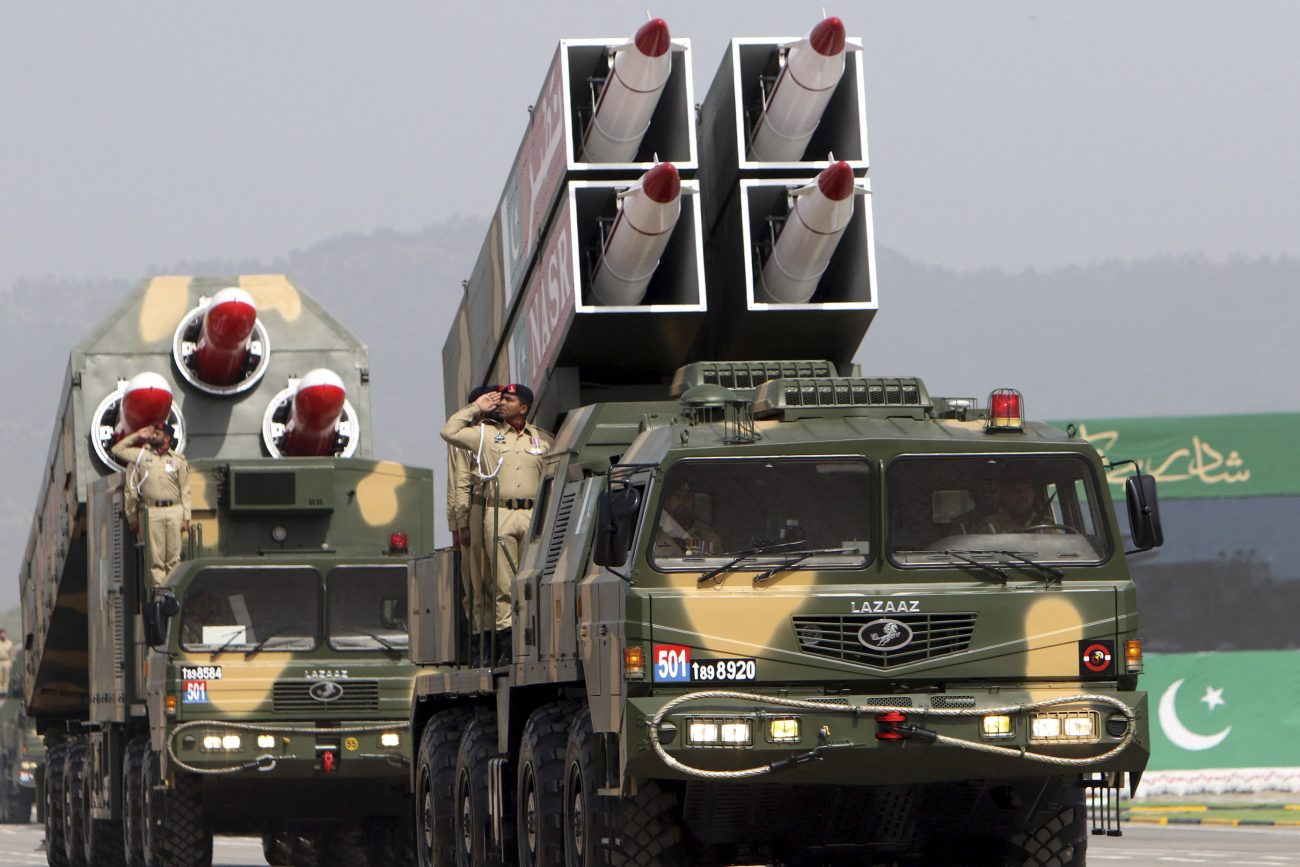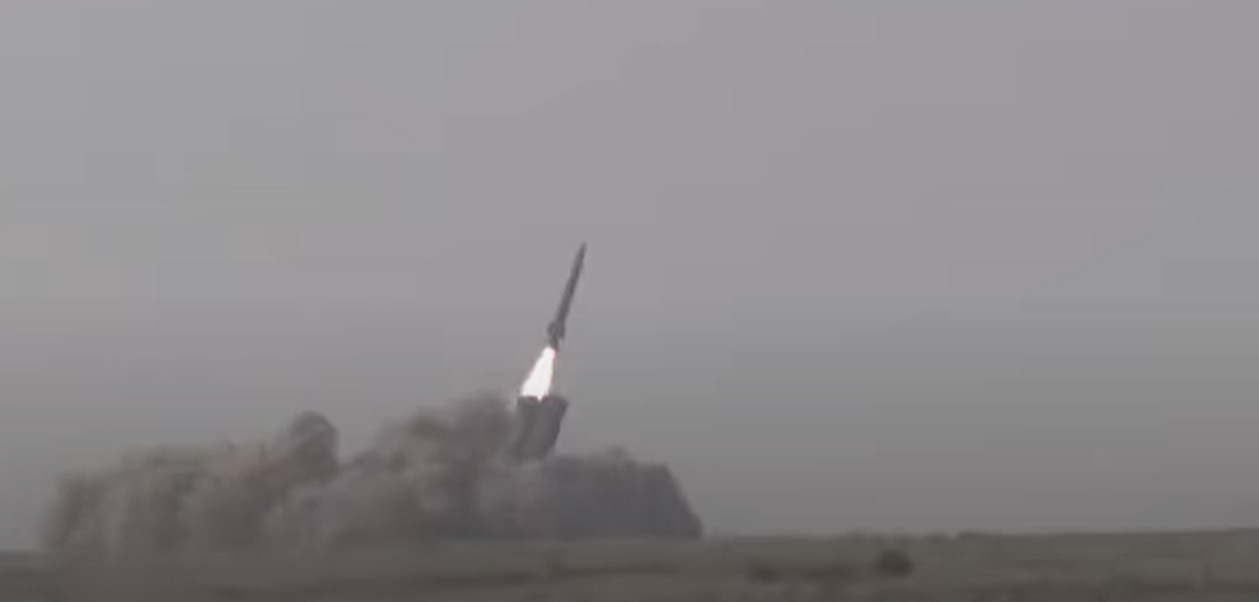Pakistan Announces New Rocket Force Just Like China’s PLARF; Here’s Why ARFC Could Worry Indian Military

On August 13, 2025, during Pakistan’s 78th Independence Day celebrations, Prime Minister Shehbaz Sharif announced the establishment of the Army Rocket Force Command (ARFC), a new military entity modeled explicitly after China’s People’s Liberation Army Rocket Force (PLARF).
This declaration, coming mere months after the brief but intense May 2025 air conflict between India and Pakistan, has sent ripples through the strategic community in New Delhi.
From an Indian perspective, this move is not just another reorganization within the Pakistan Army but a calculated escalation in the region’s power balance, potentially tilting the scales in favor of Islamabad’s aggressive deterrence posture.
The ARFC is positioned as a dedicated force for conventional missile and rocket systems, integrating ballistic, cruise, and even hypersonic capabilities under a unified command. Proponents in Pakistan hail it as a “game-changer” for precision strikes and ground support, but for India, it represents a direct challenge to our security architecture.
This article delves into how this force alters the strategic equilibrium in South Asia, whether it’s mere hype or a fundamental doctrinal shift in employing artillery missiles against India, its organizational integration into Pakistan’s existing military hierarchy, and crucially, what India must do to counter it.
Moreover, it argues that India urgently needs its own separate rocket force to maintain parity and deter adventurism.
The context is critical: The May 2025 skirmish, a four-day air war sparked by border tensions in Kashmir, saw India exploiting gaps in Pakistan’s air defenses with targeted strikes.
Despite Pakistan’s claims of a “clear-cut victory” – bolstered by rapid mobilization and alleged downing of Indian aircraft – the conflict exposed vulnerabilities on both sides.
Islamabad’s response has been to deepen ties with Beijing, negotiating acquisitions like 40 J-35 stealth fighters, KJ-500 early warning aircraft, and HQ-19 anti-ballistic missile systems.
The ARFC fits into this narrative, enhancing Pakistan’s ability to conduct stand-off precision strikes and narrowing the window for conventional warfare below the nuclear threshold.
The Strategic Balance: Tilting Towards Escalation?
South Asia’s strategic balance has long been precarious, defined by the nuclear triad on both sides and a history of asymmetric conflicts. Pakistan’s ARFC introduces a new layer of complexity, potentially disrupting India’s doctrinal emphasis on swift, limited operations under the Cold Start Doctrine.
By centralizing control over long-range rocket and missile assets, Pakistan aims to achieve “bigger tactical goals” with strategic outcomes, such as depleting India’s air defenses, airfields, and command centers.
From India’s viewpoint, this shifts the balance by enhancing Pakistan’s denial capabilities. In the May 2025 clash, Pakistan’s existing missile systems like the Babur cruise missile and Shaheen ballistic series played a supporting role, but their decentralized command limited rapid, massed employment.
The ARFC changes this, allowing for coordinated salvos that could overwhelm Indian defenses in the early stages of conflict.
I fear it could “deny India space below the nuclear threshold,” forcing escalation to nuclear levels sooner than desired. This is particularly alarming given Pakistan’s doctrine of “full-spectrum deterrence,” which blurs lines between conventional and nuclear assets.
Regionally, the ARFC strengthens the China-Pakistan axis, often dubbed the “all-weather friendship.” Modeled on the PLARF, which manages China’s vast missile arsenal for both conventional and nuclear roles, Pakistan’s force benefits from Chinese technology transfers.
Systems like the Fatah-IV ground-launched cruise missile (750 km range) and A-100 multiple launch rocket systems (MLRS) are likely core to the ARFC, enabling precision strikes deep into Indian territory.

This not only bolsters Pakistan’s deterrence against India but also indirectly supports China’s interests in containing Indian influence in the Indo-Pacific.
The broader implications extend to stability in the Indian Ocean Region and Afghanistan. A more assertive Pakistan could embolden proxy elements, complicating India’s counter-terrorism efforts.
Moreover, in a multi-front scenario involving China along the Line of Actual Control (LAC), the ARFC, on paper, has the potential to pin down Indian forces in the west, stretching resources thin.
Analyzing the Employment of Artillery Missiles
Is the ARFC mere hype, a rebranding of existing assets to boost morale post-May 2025, or does it herald a fundamental shift in how Pakistan employs artillery missiles against India?
From an Indian lens, it’s the latter – a doctrinal evolution that transforms fragmented capabilities into a cohesive, escalatory tool.
Pakistan’s missile arsenal has grown steadily, with so-called indigenous developments (it’s more like white labelling) like the Fatah-I guided MLRS (tested since 2021) and Fatah-II (400 km range, 10m CEP) drawing from Chinese designs.
Traditionally, these were dispersed under the Army’s Artillery Corps or Strategic Forces Command (SFC), supporting ground operations or nuclear deterrence. The ARFC centralizes them, enabling rapid deployment and massed fires – a fundamental difference.
This isn’t hype; it’s a response to lessons from May 2025, where decentralized command hindered effective counter-strikes. The new force allows for “precision, range, and rapid deployment from one command center,” integrating systems like Shaheen, Ghauri, Babur, and Fatah under a single umbrella.
Against India, this means artillery missiles evolve from tactical support to strategic denial weapons. For instance, salvos targeting Indian air bases could neutralize our air superiority, a key advantage in past conflicts like 2019’s Balakot strikes.
Some might argue it’s overhyped, given Pakistan’s economic constraints and reliance on China for tech. Yet, the announcement’s timing – amid talks for advanced Chinese systems – suggests substance.
It’s a low-cost way to asymmetric warfare, where missiles compensate for conventional inferiority. For India, this demands reevaluation: Our Akash and S-400 defenses are robust, but saturation attacks from a dedicated force could test limits.
Organization and Hierarchy: Integration Into Pakistan’s Military Framework
Understanding the ARFC’s organization is key to assessing its threat. It operates under the Pakistan Army, parallel to the Army Strategic Forces Command (ASFC), which handles nuclear assets under the Strategic Plans Division (SPD).
This separation ensures conventional focus, avoiding nuclear entanglement while allowing doctrinal flexibility.
Pakistan Army’s hierarchy is corps-based, led by the Chief of Army Staff (COAS). The ARFC is likely a new corps-level command, headed by a Lieutenant General reporting directly to the COAS or Chief of General Staff.
Subordinate structures may include brigades for specific missile types: e.g., MLRS brigades for Fatah-I/II, cruise missile units for Babur/Fatah-IV, and potential hypersonic divisions.

Integration draws from China’s PLARF, with specialized training, doctrine, and logistics. Administratively, it falls under the SPD’s umbrella for oversight, but is operationally independent. This hierarchy streamlines command: From COAS to ARFC Commander, then to field units, enabling quicker decision-making than the previous artillery-embedded model.
For India, this means facing a more agile adversary. The ARFC’s elite status – among a few nations like China, Russia, and North Korea with dedicated rocket forces – elevates Pakistan’s military prestige.
India’s Countermeasures
India cannot afford complacency. To counter the ARFC, we must adopt a multi-pronged strategy encompassing deterrence, defense, and diplomacy.
First, accelerate missile defense enhancements. The HQ-19 acquisitions by Pakistan underscore the need for layered systems like the indigenous Advanced Air Defence (AAD) and Project Kusha, alongside S-400 regiments. Investing in hypersonic interceptors and electronic warfare to jam guidance systems is crucial.
Second, offensive capabilities: Expand our BrahMos and Nirbhay cruise missiles, deploying them in forward positions. The Pralay ballistic missile, with a 500 km range, should be inducted en masse post-2025 tests.
Third, intelligence and cyber: Bolster ISR via satellites and drones to monitor ARFC deployments. Cyber operations targeting command nodes could disrupt launches.
Diplomatically, engage the US, China, and Quad partners to pressure China on tech transfers. Highlight Pakistan’s proxy support in global forums.
Does India Need a Separate Rocket Force?
Absolutely. Proposals for an Integrated Rocket Force (IRF) have lingered since 2023, aiming to unify tri-service missile assets for conventional deterrence. The IRF would centralize systems like Agni, Prithvi, Pralay, and BM-04 under a dedicated command, mirroring the ARFC but with superior indigenous tech.
Why now? The ARFC exposes gaps in our structure, where missiles are siloed across the Army, Navy, and Air Force. An IRF ensures rapid, integrated strikes, enhancing deterrence against Pakistan and China. It aligns with theaterisation, creating a “non-contact war” capability.
Command could be under the Chief of Defence Staff (CDS), with a Lt Gen commander. Benefits include cost-efficiency, doctrinal clarity, and signaling resolve. Delays risk ceding initiative; 2025 tests of Pralay and BM-04 provide momentum.
Conclusion: Safeguarding India’s Sovereignty
Pakistan’s ARFC is a wake-up call, altering South Asia’s strategic calculus and demanding proactive Indian responses. By forming our IRF and bolstering defenses, India can restore balance, deter aggression, and secure our borders. In this era of missile diplomacy, strength lies in innovation and unity – values that define Bharat’s resilient spirit.
- Questions and Answers
- Opinion
- Motivational and Inspiring Story
- Technology
- True & Inspiring Quotes
- Live and Let live
- Focus
- Art
- Causes
- Crafts
- Dance
- Drinks
- Film/Movie
- Fitness
- Food
- Παιχνίδια
- Gardening
- Health
- Κεντρική Σελίδα
- Literature
- Music
- Networking
- άλλο
- Party
- Religion
- Shopping
- Sports
- Theater
- Wellness
- News
- Culture

